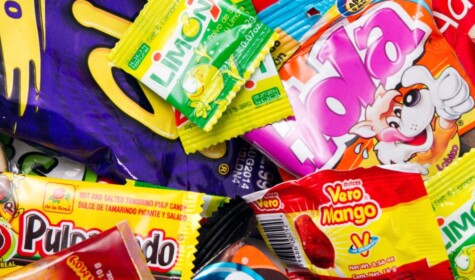Since the emergence of COVID-19, researchers have tried to establish which populations are most at risk, both from catching the virus and succumbing to it. It would appear from initial findings that there is a correlation between obesity and coronavirus. Studies have found that COVID-19 patients who had ‘excess weight’ above 25kg/m² were more likely to be hospitalised, need intensive care, and ultimately, die. Dr Alison Tedstone, chief nutritionist at Public Health England, said in an interview, ‘The current evidence is clear that being overweight or obese puts you at greater risk of serious illness or death from COVID-19, as well as from many other life-threatening diseases.’
Due to the link between obesity and coronavirus, regional governments in Mexico have moved to restrict children’s access to junk food. This follows a number of other Governments across the globe that have passed laws to ban junk food. Mexico was also one of the first countries to pass a fizzy drink tax.
Tabasco and Oaxaca have prohibited the sale of sodas and highly processed food to kids under eighteen. The law establishes fines, store closures and jail time for those who continue to sell to minors. The goal of the legislators is to stop the spread of the virus and protect the health of young people.
Mexico has been hit hard by coronavirus and has struggled to keep the outbreak under control. In August, it reported that 60,000 citizens had died from the virus with 556,216 cases confirmed. However, it might be far worse than those official statistics suggest. Officials acknowledge that the Government’s data is under-representative and the health ministry and private studies say the real death rate could be three times higher.
High levels of obesity in Mexico has likely played a significant role in the elevated number of cases and fatalities. About 73% of the Mexican population is overweight (compared to one-fifth of the population in 1996). In addition, 34% of obese people are morbidly obese – the highest level of obesity. High levels of overweight and obesity are also affecting Mexico’s economic performance and has shrunk Mexico’s working population by the equivalent of 2.4 million full-time workers per year. However, most concerning is that child obesity in Mexico has doubled from 7.5% in 1996 to 15% in 2016.
The Mexican obesity crisis has been directly attributed to the North American Free Trade Agreement (NAFTA). NAFTA is a treaty entered into by the United States, Canada and Mexico that went into effect on January 1, 1994. Following the adoption of NAFTA, obesity rates rose significantly in Mexico, due to the influx of foreign investment. Corporate advertising and open market access meant that cheap, American fast food flooded the Mexican market, which led to an increase in the consumption of sugary beverages. Mexican consumption of sugary beverages nearly tripled between 1993 and 2014.
It seems unlikely that the new trade deal, USMCA, that has been signed between Mexico, the United States and Canada will do anything to reverse this trend. President Trump, having rejected the terms of NAFTA since he maintained that it damaged US interests, negotiated a new trade deal upon entering the Executive Office and it was signed and ratified by the US Congress in January 2020. That said, the new deal is based on the same globalised approach to food production. Just like NAFTA, USMCA allows big transnational food companies (like Kellogg’s, Coca Cola and Mars) to produce and ship huge quantities of food around North America without restriction.
Such a rise in obesity associated with increased globalisation is not unique to Mexico. Countries across the Global South have seen obesity rates rise as they have opened their markets to outside investment and as globalised trade has ramped up. In response to rises in obesity, other countries have taken similar action to curtail the consumption of fast food by children. In Chile, the ready availability of convenient, pre-packaged food resulted in 67% of Chileans over 15 years old becoming overweight or obese. To combat this crisis, Chile introduced a new nutrition label in 2017 for all foods that exceeds 275 calories, 400 milligrams of sodium, 10 grams of sugar or 4 grams of saturated fats per 100 grams. Products that feature these labels are not allowed to be advertised to children, cannot include toys and cannot be sold in or near schools. However, the US referred Chile to the WTO, saying that the associated delays from repackaging has cost US firms ‘millions of dollars’ in lost sales and that the labels create an ‘unfair barrier to trade’.
Given that the US reacted with hostility against Chile’s actions to restrict the sale of fast food, it is possible that they could bring a similar case against Mexico for the actions of these regional authorities. The question is, would they? Given the turmoil in the US from COVID-19 and the impending election, it seems hard to image that the US Government would have the political will to take such a step. Additionally, President Trump has blocked the appointment of appellate judges to the WTO, which has caused the WTO to essentially cease functioning, since without judges it cannot hear cases or issue judicial opinions. Simply put, there would be no one empowered to assess or rule on the case were they to bring it. Furthermore, with the pandemic raging, the international community has allowed countries some latitude in their domestic laws to tackle the outbreak. For example, restricting access to ports and increasing inspections at the border.
However, if the US did want to challenge the validity of these restrictions in an international context, they might be better to wait a few more months. A nationwide labelling law, based on the Chilean one, came into effect in Mexico within the last few days. This new law will require black stop signs to appear on packages of foods that are high in added sugar, saturated fats, calories and added sodium. Nothing with black stop signs can be sold or promoted in schools in order to protect children. Once that law is in place, there would be better legal grounds for the US to challenge the Mexican Government since the decision to challenge a national law would be considerably more aligned with the WTO framework than if the US Government were to challenge Mexico’s national government over a regional dictate.
That said, a new President will be elected imminently and with him, potentially, an entire new trade agenda for the United States. In more ways than one, Mexico will have to wait to see what the 3rdNovember brings and how the outcome of the election will impact their future.







